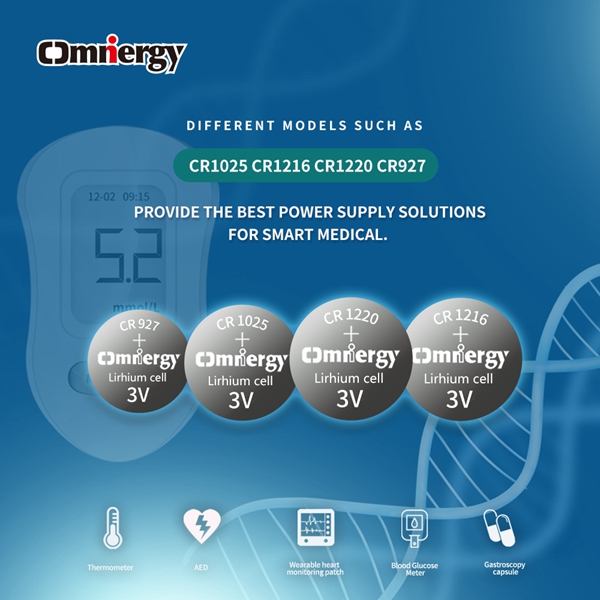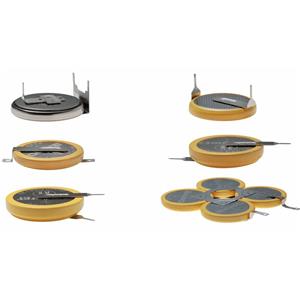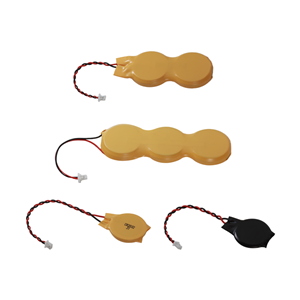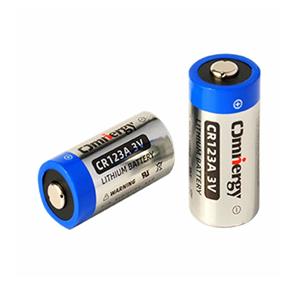lithium manganese button batteries in smart medical and CGM blood glucose meters
lithium manganese button batteries in smart medical and CGM blood glucose meters
Lithium manganese button batteries (CR series) have become the core power supply of smart medical devices, especially continuous glucose monitoring (CGM) systems due to their unique performance advantages. The following is a detailed description of technical characteristics, model comparison, application scenarios and industry trends:
Technical characteristics and advantages of lithium manganese button batteries
1. Chemical composition and voltage characteristics
- Chemical system: The positive electrode is manganese dioxide (MnO₂), the negative electrode is metallic lithium, and the electrolyte is an organic solvent, providing a stable 3V nominal voltage (traditional alkaline batteries are only 1.5V).
- Discharge curve: The voltage output remains stable within 90% of the capacity range (about 3V to 2V), ensuring stable operation of the medical device circuit and reducing data errors.
2. Key performance parameters
- Energy density: The energy density of the CR series reaches 270-300Wh/kg, far exceeding alkaline batteries (about 100Wh/kg). For example:
- CR2032: 220-245mAh capacity, supports CGM devices to work continuously for 10-14 days.
- CR1220: 38-40mAh capacity, suitable for compact sensor modules.
- Temperature adaptability: Most models can work from -20℃ to +60℃, and special models (such as CR2032HT) can be extended to -40℃~125℃, suitable for complex in vitro/in vivo environments.
- Self-discharge rate: annual self-discharge rate ≤2%, storage life up to 10 years, meeting the long-term backup needs of medical equipment.
CGM blood glucose meter core requirements for batteries
CGM needs to monitor blood sugar around the clock and transmit data in real time, and the requirements for batteries are extremely strict:
1. Miniaturization: The device needs to be attached to the skin or implanted subcutaneously, and the battery size needs to be extremely compressed (such as CR1216 thickness is only 1.6mm). 2. Long battery life: Typical CGM device power consumption breakdown:
- Sensor: 3-5μA (continuous operation)
- Bluetooth module: pulse current 10-20mA (each transmission)
- Microcontroller (MCU): 1-3μA (sleep mode)
- Comprehensive battery life: CR2032 can support 7-14 days, meeting FDA's monitoring requirements for CGM devices for at least 10 days.
3. Safety: UL1642, IEC60086 and other certifications are required to prevent leakage, overheating or explosion risks.
Technical challenges and solutions
1. Capacity attenuation in low temperature environment
- Problem: The capacity of ordinary lithium manganese batteries drops by more than 50% below -20°C.
- Solution:
- Electrolyte improvement: Add low-temperature additives (such as propylene carbonate) to improve ionic conductivity.
- Circuit compensation: The device has a built-in heating module or uses a boost chip to maintain voltage.
2. Pulse current requirements
- Problem: The instantaneous current during Bluetooth transmission reaches 15-20mA, which may cause a voltage drop.
- Solution:
- Parallel capacitor: Connect a 100-220μF capacitor in parallel to the battery output to buffer the current peak.
- Selection optimization: Choose a high pulse performance model.
3. Safety and compliance
- Medical certification: The battery must pass the medical device quality management system and biocompatibility test
- Leak-proof design: Use laser welding sealing or double-layer shell structure.
Future development trends
1. High capacity:
- Improve energy density through nano-sizing of positive electrode materials (such as MnO₂ nanowires), and increase the target capacity by 30% (such as CR2450 can reach 600mAh).
2. Rechargeable solution:
- Rechargeable lithium manganese batteries (ML series, such as ML2032) have a cycle life of 500 times, reducing medical waste.
3. Intelligent integration:
- Built-in micro PMIC (power management chip) to achieve battery health monitoring and adaptive adjustment of device power consumption.
4. Environmental protection and degradability:
- Research and development of biodegradable shell materials (such as polylactic acid PLA) in compliance with the EU WEEE Directive.
Lithium manganese button batteries play the role of "micro energy core" in CGM blood glucose meters. Their high voltage, long life and miniaturization characteristics perfectly meet the needs of medical equipment. In the future, with the advancement of material science and power management technology, CR series batteries will further promote the development of smart medical equipment towards smaller size, longer battery life and higher safety. For manufacturers, it is necessary to continuously optimize the low temperature performance and environmental protection design of batteries, and strengthen collaborative development with medical equipment companies to meet increasingly stringent medical regulations.





